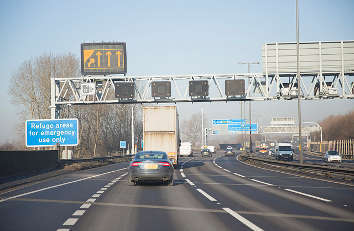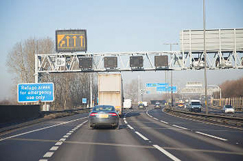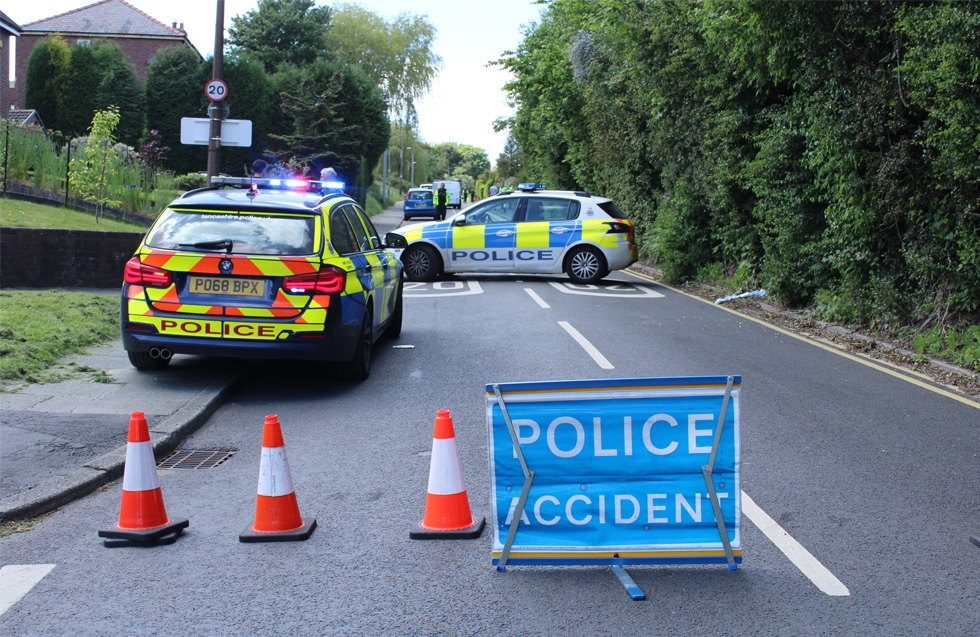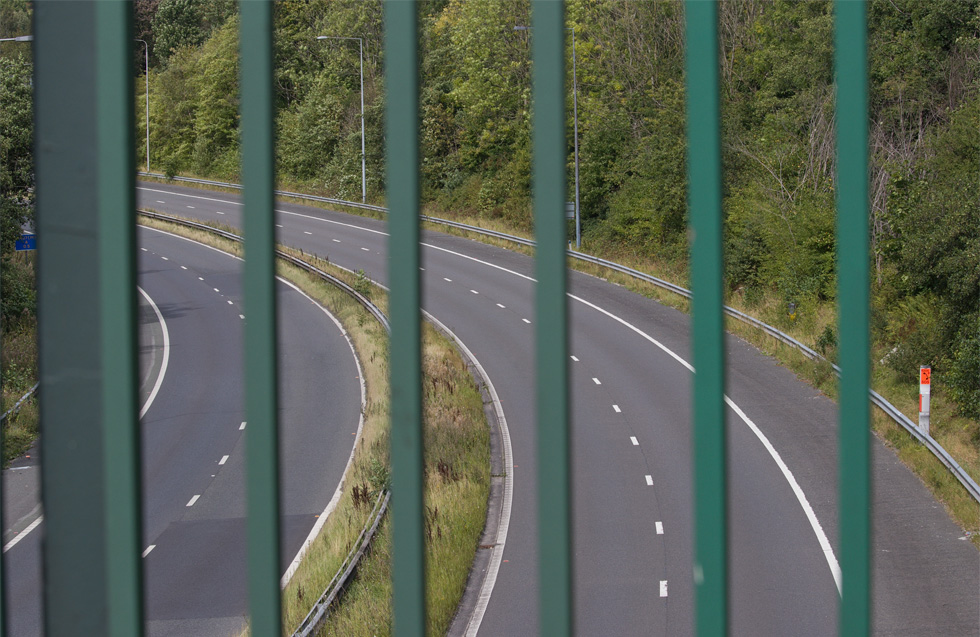The much-anticipated smart motorway stocktake has been released by the Department for Transport (DfT), including an action plan on how to improve safety on the controversial roads.
Following a number of fatalities on smart motorways, transport secretary Grant Shapps called for the stocktake in October last year.

The Government concedes that 'some risks are higher on smart motorways than conventional motorways, for example the risk of a collision between a moving and stationary vehicle', but says that others are lower, including tailgating, rapid changes of vehicle speeds, vehicles drifting off the carriageway and vehicles being driven too fast.
The action plan provides an 18-point package of measures 'to improve safety and public confidence' including confirming the end to 'dynamic hard shoulder' motorways - where the hard shoulder switches in and out of being a live lane - 'to end confusion'.
The package of measures also calls for action on speeding up the roll-out of stopped vehicle detection;
'A radar-based system which spots stationary vehicles will be installed across the entire smart motorway network within 36 months,' the DfT pledged.
Highways England has previously committed to this but declined to give a timescale. Last year chief executive Jim O'Sullivan told MPs: 'Refitting it and productionising it so that you can roll it out over hundreds of miles as a retrofit programme is quite a challenge.'
It is also unclear whether retrofitting existing technology will address some of the issues around its effectiveness in different traffic conditions, particularly in high levels of traffic.
The DfT stated: 'Highways England has been investigating other technologies for detecting stopped vehicles and has run a small-scale trial of a system that analyses CCTV images. As a result of this evidence stocktake, Highways England will launch a large-scale trial of this technology. This will make greater use of the full CCTV coverage on smart motorways, providing another option alongside current radar technology.'
Mr Shapps also called for the distances between refuge areas to be reduced from 1.5 miles to three quarters of a mile; however the Government only commits to doing this 'where feasible' and on 'future schemes'.
The DfT adds that it will 'consider a national programme of retrofitting additional emergency areas on existing smart motorways where places to stop in an emergency are more than one mile apart, drawing on evidence from the programme to deliver additional emergency areas on the M25'.
AA president Edmund King said: 'For the last decade we have been campaigning to improve the design and safety of "smart" motorways. The measures announced by the transport secretary today are a victory for common sense and safety.
'We applaud Grant Shapps for instigating the review and taking this issue very seriously. We believe the intention to place ERAs at every three-quarters of a mile is a great outcome and what we have called for over the last decade.'
RAC head of roads policy Nicholas Lyes said: 'Two-thirds of drivers tell us that they believe permanently removing the hard shoulder compromises safety in the event of a breakdown.
'While it is welcome that the Government has listened to their concerns and undertaken this review, it remains to be seen whether these measures go far enough to protect drivers who are unfortunate enough to break down in live lanes.'
Mr O'Sullivan said: 'We will be taking forward the measures the secretary of state for Transport has set out, and we will be improving further our information to drivers to help them be safer on all of our roads, including our smart motorway network.'
Simon Morgan, an expert in signage, said: 'The report doesn't address the alarming rise in near-miss incidents reported in the media that apparently related to the change to all-lane running on sections of the M25.
'I think this rise may have been more to do with the presence of road works and not the change in lane usage, but it would be nice to know. As well as the better enforcement of 'Red X' mentioned in the report, we also need more intelligent information for motorists - such as can you enter a Red X lane if you break down on All Lane Running, rather than stopping in a live lane, and what about a Red X above lane 1 just before a slip road exit (which I have now seen 3 times)?'
The action plan includes:
- abolishing the confusing 'dynamic hard shoulder' smart motorways, where the hard shoulder operates only part-time and is a live running lane the rest of the time
- substantially speeding up the deployment of 'stopped vehicle detection' technology across the entire 'all lane running' smart motorway network, so stopped vehicles can be detected and the lanes closed more quickly. Highways England is to accelerate its plans and install the technology within the next 36 months, setting a clear public timetable for the first time
- faster attendance by more Highways England traffic officer patrols on smart motorways where the existing spacing between places to stop in an emergency is more than one mile, with the aim of reducing the attendance time from an average of 17 minutes to 10 minutes
- reducing the distance between places to stop in an emergency to three quarters of a mile where feasible so that on future schemes motorists should typically reach one every 45 seconds at 60mph. The maximum spacing will be one mile
- installing 10 additional emergency areas on the existing M25 smart motorways on the section of smart motorway with a higher rate of live lane stops and where places to stop in an emergency are furthest apart considering a national programme to install more emergency areas where places to stop in an emergency are more than one mile apart
- investigating M6 Bromford viaduct and the M1 at Luton, Sheffield and Wakefield where there is evidence of clusters of incidents. Where an intervention is considered likely to make a difference, we will look to make changes at these locations
- making emergency areas more visible – all emergency areas will have a bright orange road surface, dotted lines on the surfacing showing where to stop, better and more frequent signs on approach and signs inside giving information on what to do in an emergency. These will be installed by the end of spring 2020 more traffic signs giving the distance to the next place to stop in an emergency, so you will almost always be able to see a sign. Typically, these will be between approximately 330 and 440 yards apart more communication with drivers.
- £5m on national targeted communications campaigns to further increase awareness and understanding of smart motorways, how they work and how to use them confidently
- displaying ‘report of obstruction' messages automatically on electronic signs, triggered by the stopped vehicle detection system, to warn drivers of a stopped vehicle ahead; this is currently being trialled on the M25 and then a further trial on the M3
- places to stop in an emergency shown on your satnav by working with satnav providers to ensure the locations are shown on the screen, when needed
- making it easier to call for help if broken down by working with car manufacturers to improve awareness of the use of the eCall ‘SOS' button in newer cars to call for help
- we have changed the law to enable automatic detection of ‘red X' violations and enforcement using cameras and we will be expanding the upgrade of smart motorway cameras (HADECS) to identify more of those who currently ignore the ‘red X'. The penalty is 3 points on the driver's licence and a £100 fine, or the driver can be referred to an awareness course
- an update of the Highway Code to provide more guidance
- closer working with the recovery industry on training and procedures
- reviewing existing emergency areas where the width is less than the current 15 foot wide standard. If feasible and appropriate we will widen to this standard
- a review of the use of red flashing lights to commence immediately. We have listened to the calls for recovery vehicles to be allowed to use red flashing lights. We will commence work immediately on a review.

























